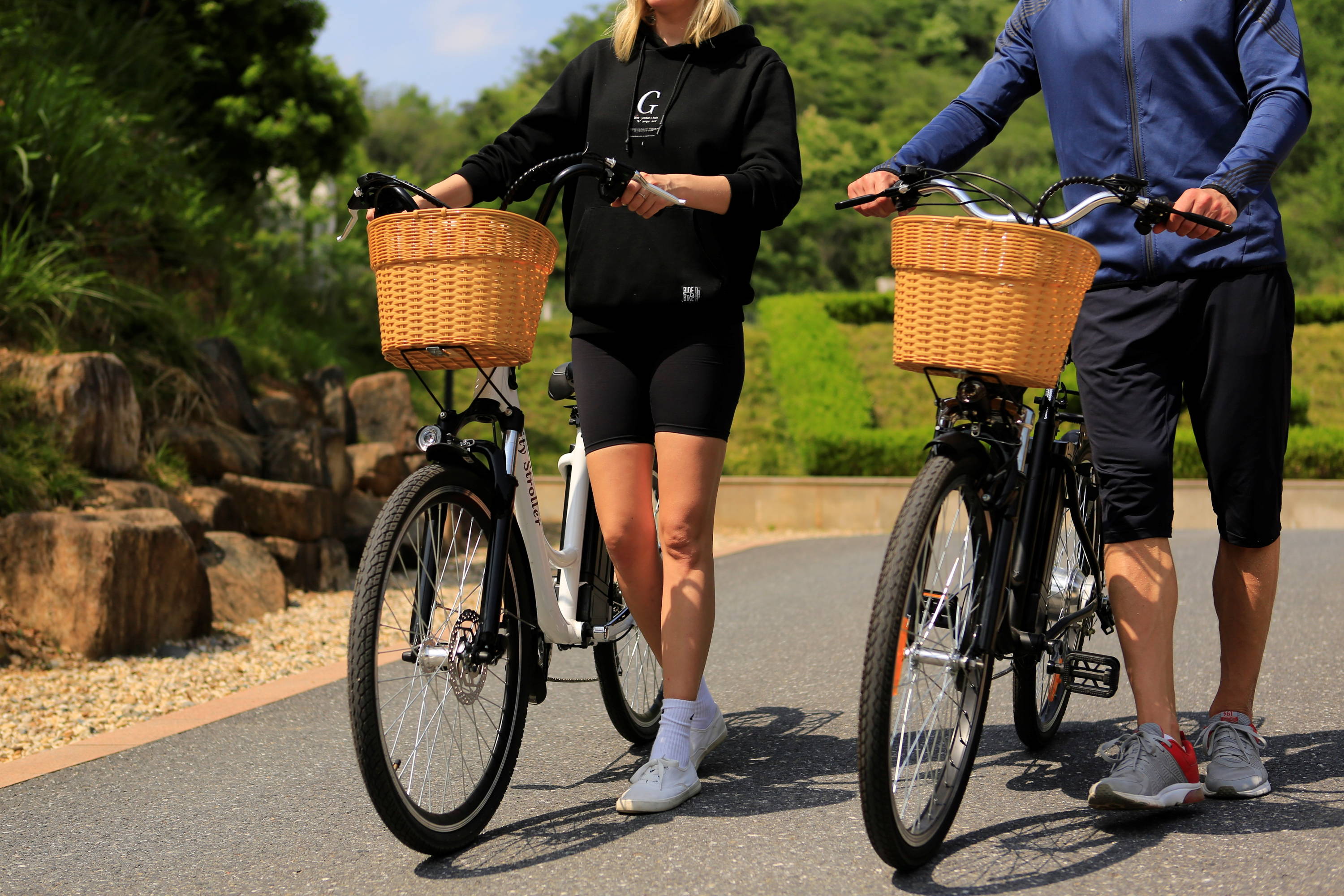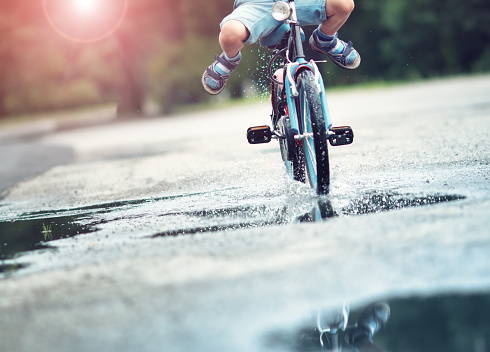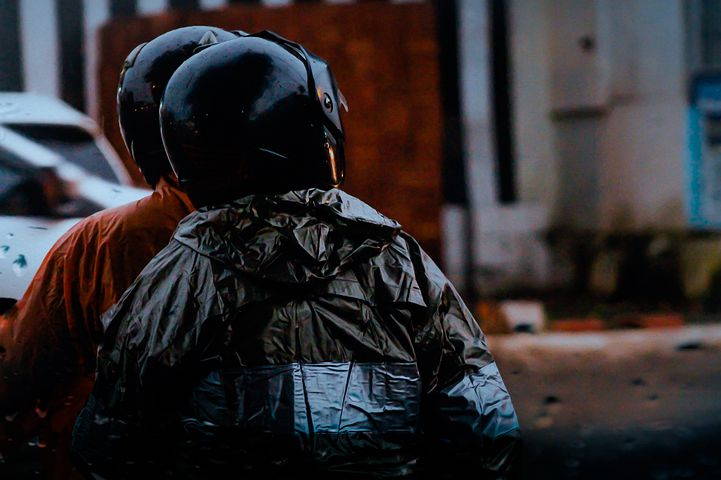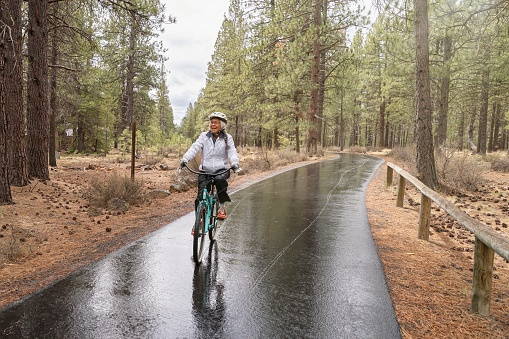MAY 24, 2022
Are Electric Bicycles Rainproof: Everything You Need To Know
In recent times the demand for electric bicycles has been picking up pace, and the more popular they become, the more questions people have about them, just like any new technology. One of the more obvious questions is, "are electric bicycles waterproof."
Read on to know the answers to these questions.

Although electric bicycles are the same as traditional bikes, many things set the two aside. For starters, an electric motorcycle has components absent in the conventional bicycle, namely the battery and the motor; these electrical components make people wonder if electric bikes are genuinely waterproof.
Electric bikes are bicycles with a battery-powered "assist" that comes via pedaling and, in some cases, a throttle. They feel like the traditional bikes that we ride, and you can also control your speed with your feet like a conventional bike, but you feel powerful and accelerate quickly.
Can you use electric bikes in the rain?
A question that bothers most people about electric bicycles is "are they waterproof" or "can you use your electric bike in the rain.":
No, they aren't waterproof, but they are water-resistant. And yes, you can get your bike wet. It means you can ride an Ebike during a shower. So overall, an Ebike should be rideable irrespective of the weather conditions.
However, Ebikes are not entirely foolproof. The electrical components are a significant factor because your Ebike could be under certain conditions and situations that might lead to damage immediately or over time.

For some unavoidable reasons, you may ride in the rain. Here are a few skills/tips to ensure the rain doesn't affect you from getting to your destination.
Lower Your Tire Pressure
It's best to adjust your tire pressure to match road conditions. How? The idea is to gain more traction from your tires. For instance, your bike's tires will have problems treading on wet surfaces at about 100 psi. It could cause you to slip after a sharp break or when you want to make a quick corner turn.
Flip Your Frame Upside-down
Despite your bike's drain hole, it's still essential that you flip it over to the drain. This practice will ensure that your bike is free of excess water, leading to rust over time.
Clean Your Electric Bike After you Ride
After riding in the rain, it is necessary to clean and dry your bicycle. This practice will increase its chances of longevity.
Slippery Spots
Spots with lubricative substances such as oil and petrol shouldn't be in your path during the rainy season. Such could lead to a fatal slip-up that could damage your bike. The same applies to puddles on the road and even the white line that divides both sides of the road (they get slippery in the rain).
Use Fenders
Fenders will help with making certain parts of your bike splash-proof. Such as its drive train. Also, it's best to use plastic fenders instead of metal ones as it helps to prevent excessive rusting.
Apply Grease
Various parts of an electric bike could get severe damage from overexposure to water droplets. Such as its electric contacts. These parts don't get issues from just the mere presence of water droplets on them. But they tend to rust over time. To reduce the possibility of such an issue, you should apply grease to the electric contacts. It will help improve the longevity of your electric bike.
Note: apply the Dielectric lubricant. Because it's a far better water deterrent and corrosion preventive measure than regular grease.
Get Protection For The Frame
Electric bikes are pretty light vehicles. Although they may have the design to avoid short-circuiting and damage from exposure to water, that protection can wear down over time. For longevity, it's best to apply certain protectives such as silicone self-infusing tape or a water-resistant electronic coating spray.
Get A Bike Cover
It's possible to be in a situation where you have no choice but to park your bike in an exposed area. Void of any form of protection against rainfall. Such a situation tends to be unavoidable during the rainy season. However, you can solve this problem by carrying along with a bike cover made of a water-resistant material.
You can set up the cover over your electric bike or collapse it into the zippable protective bag.
Note: the cover bag is extremely lightweight and very easy to use. It won't take that much effort to carry it along.
Keep Your Bike Indoors
Try to keep your electric bike indoors when it's not in use. This practice will protect your electric bike from sudden rainfalls. It also protects your Electric Bike's iron frame from rust due caused by the sudden change of heat and cold. When it's in your home or garage, your Ebike will always be safe.

Here are various skills to adopt which will improve your driving experience on an Ebike in the rain:
Control Your Speed
Over-speeding is probably the critical skill that will cause crashing; no matter how good the technique is, there is a high probability of skidding if you are too fast. It is paramount that you watch your speed on rainy days, especially if your bike tires have poor grip due to the wet roads, and the rain might somewhat affect your vision. It means that you might not have much time to react, so take more time while riding.
Brake Early
Electric bikes use disk brakes which take more time to be effective. Because it consists of two sources, such as a pedal system and an electric motor, it's best to stay highly aware of your path and apply brakes as early as possible.
NOTE: Disc brakes are better at handling wet roads than the traditional rim brakes.
Weatherproof Yourself
You are the most crucial component of your Ebike, as you're in charge of navigating it through the safest possible path with ease. However, what good is the Ebike if you're in a tense and unfavorable state due to the cold weather. You need to stay warm and protect your vision while you ride.
Several pieces of gear to make you weatherproof:
Cycling cap - along with your goggles and helmet, the cycling caps should keep your vision safe from rain.
Rain jacket - this should keep you from getting cold as you navigate the safest route.
Water-resistant gloves - you should have such gloves to give your hands and fingers a good grip on the handle so that it doesn't slip off.
Weatherproof your stuff
The point here is that you want to be able to keep your property dry while you ride wet, whether the element is your laptop, your mobile phone, or even a paperback novel.
The best choice for most electric bike riders will be a seam-sealed waterproof pannier bag, ziplock bag, water-resistant nylon bag, backpack, or shoulder bag.
Use lights
Apart from weatherproofing yourself and your staff, you also ensure proper visibility—both for our sights and incoming vehicles. Especially if you're riding on a busy road during a heavy shower when visibility is abysmal for other vehicle riders, you need bright heads and rare lights that can be visible for miles to vehicle feet away at night in the rain.
Reflectors should also be present on your electric bike. As it allows other vehicle riders to identify your position when they stare their headlamps on your bike
Note: The law requires you to have lights on your electric bike in the rain in many places. So typically speaking, you will need a front-facing white light bright enough that it can be visible at least 500 feet away.
Plan Your Trip
Before you begin your biking sessions during the rainy season, it's best to map out the destinations you'll pass through because you're handling an Ebike, which has sensitive components (like the battery). So the route you're mapping out has to be free of potholes, mud puddles, obstacles, untarred or unpaved roads, and other possible slip-spots. This practice would ensure your journey is smooth and free of mishaps. It would also help reduce the unavoidably slow wear and tear of your Ebike.
Note: if you reside in an area with a tedious landscape, you have to be more cautious as you tread. Make sure to carefully approach easy portholes or mud puddles if they're unavoidable.
Get Your Emergency Kit
Despite obeying all the safety protocols and taking all necessary measures, it's still possible to have an accident. Especially if the weather conditions are bad (like heavy rain), it would be a big problem if you didn't carry a medkit or any emergency kit for the ride. Such a situation could lead to leaving a wound open and untreated with a significant possibility of getting infected as you make your way back.
List of necessary items to carry along:
●Flash light
●An extra Bike battery
●Towel
●Set of light tools for quick repairs
●Med supplies: pain killers, bandages, and so on
●An emergency Device
●Food
How To Wash Your Electric Bike
Immediately or sometime after your biking sessions, you should try washing your electric bike. Because it's not a traditional bike, it's advisable not to wash it like one.
Here are the sets of instructions on how to wash your electric bike:
●Step one: Remove the Battery
The first step to take when washing your Ebike is to remove the battery. Because it's a sensitive component of the bike, it can break down if you expose it to water. So extracting and placing it in a safe water-free spot is advisable.
●Step Two: Wash Down Your Bike
Get your liquid car wash or bike soap solution and scrub down your bike. Ensure the frames and all the hidden corners of the cycle are free of debris and dirt.
●Step Three: Drain And Dry
Once you're done washing down your bike, bounce the tires against the floor to remove the excess water left. Then wipe every part of the bike dry with a rag.
Also, flip the bike over and place it in a dry spot with ample sun exposure.
●Step Four: Lubricate
The next to take after drying your Ebike is to apply oil to the drive train so that it won't rust or jam.
Q: Can Electric Motors get Wet?
A: Electric motors are naturally neither water-resistant nor waterproof, so they can get wet and break down. They have insulation that prevents the motor's winding from absorbing water.
Q: Are Electric Bikes ok in the rain?
A: Electric bikes are generally safe in the rain because they are water-resistant.
Q: Are Electric Bikes Waterproof?
A: Electric bikes are not waterproof. Instead, they are water-resistant. For an object to be waterproof, it means it should be able to work underwater; electric bikes, on the other hand, cannot work underwater.

Most electric bicycles are water-resistant though their water resistance depends on their IP rating. Although extra measures should be on standby to make sure an electric bike has more resistance to water, this doesn't mean that you can't ride your bike under a heavy downpour of rain.
